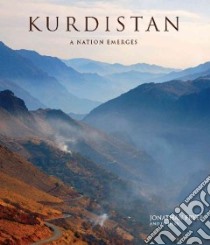Kurdistan - 9781906768188
Un libro in lingua di Jonathan Fryer Michael Howard Parwez Zabihi Max Scott edito da Stacey Intl, 2010
- € 51.70
- Il prezzo è variabile in funzione del cambio della valuta d’origine
Kurdistan is one of the Middle East's great recent success stories. The area controlled by the Kurdistan Regional Government of newly federal Iraq occupies much of what is now northern and north-eastern Iraq and has distinguished itself by its stability and strong economic growth.
Crisscrossed throughout history by the invading armies of the major powers on the surrounding plains, this mountainous terrain has in recent years become strategically important in its own right because of its formidable mineral reserves. While the income from oil resources has assured financial stability for the newly established regional government, the Kurds have not lost sight of the natural bounty of their land --- some of the best agricultural land in the Middle East --- and of the importance of encouraging trade across its frontiers. Erbil, whose citadel lays claim to being the oldest continuously inhabited city in the world, is increasingly a hub that connects Turkey and the Levant with the Gulf states to the south.
Kurdistan, A Nation Emerges is the first ever major photographic book on the land and its peoples. It assembles the work of a team of international experts to present an authoritative overview of Kurdistan's ancient history and cultural heritage from which has emerged today's society and the Kurds' role in the political world of tomorrow.
The flag of Kurdistan, now prevalent across the entire area controlled by the Kurdistan Regional Government, has been carried by various Kurdish independence movements over the years, probably originating amongst Kurdish groups under the Ottoman yoke.
Earlier versions were flown by the breakaway republic of Ararat in Turkey (1927-1931), and by the briefly independent Republic of Mahabad in north west Iran in 1946.
The blazing disc at its centre is an ancient cultural symbol, its 21 rays having religious significance to this day for the Yazidi communities across the region.
Informazioni bibliografiche
- Titolo del Libro in lingua: Kurdistan
- Lingua: English
- Autori : Jonathan Fryer Michael Howard Parwez Zabihi Max Scott
- Editore: Stacey Intl
- Collana: Stacey Intl (Hardcover)
- Data di Pubblicazione: 01 Maggio '10
- Genere: HISTORY
- Pagine: 163
- ISBN-10: 1906768188
- EAN-13: 9781906768188


